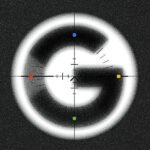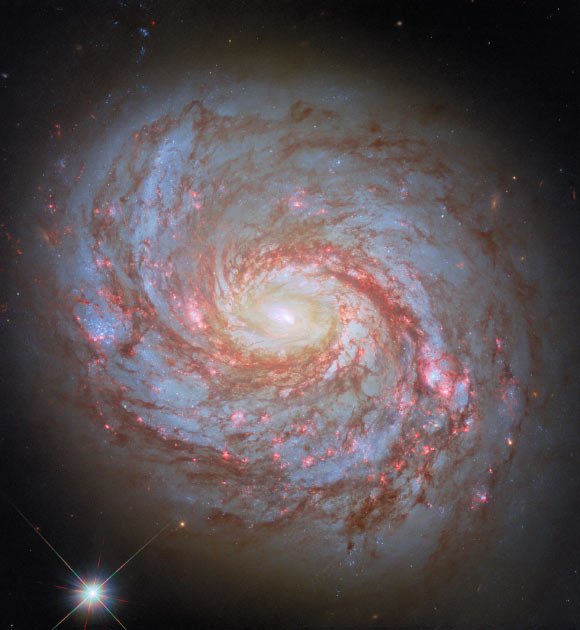NASA has released an incredibly beautiful image taken by the Hubble Space Telescope of the barred spiral galaxy Messier 77.

This Hubble image shows Messier 77, a barred spiral galaxy some 62 million light-years away in the constellation of Cetus. The color image was made from separate exposures taken in the ultraviolet, visible and near-infrared regions of the spectrum with Hubble’s Advanced Camera for Surveys (ACS) and Wide Field Camera 3 (WFC3) instruments. It is based on data obtained through six filters. The color results from assigning different hues to each monochromatic image associated with an individual filter. Image credit: NASA / ESA / Hubble / L.C. Ho / D. Thilker.
Messier 77 is located 62 million light-years away from Earth in the constellation of Cetus.
Also known as the Squid Galaxy, NGC 1068, LEDA 10266 and Cetus A, this galaxy has an apparent magnitude of 9.6.
It was discovered by the French astronomer Pierre Méchain in 1780, who originally identified it as a nebula.
Méchain then communicated the discovery to his colleague, the French astronomer Charles Messier.
Messier believed that the highly luminous object he saw was a cluster of stars, but as technology progressed its true status as a galaxy was realized.
“The designation Messier 77 comes from the galaxy’s place in the famous catalogue compiled by the French astronomer Charles Messier,” Hubble astronomers said in a statement.
“Another French astronomer, Pierre Méchain, discovered the galaxy in 1780.”
“Both Messier and Méchain were comet hunters who catalogued nebulous objects that could be mistaken for comets.”
“Messier, Méchain, and other astronomers of their time mistook the Squid Galaxy for either a spiral nebula or a star cluster.”
“This mischaracterization isn’t surprising. More than a century would pass between the discovery of the Squid Galaxy and the realization that the ‘spiral nebulae’ scattered across the sky were not part of our Galaxy and were in fact separate galaxies millions of light-years away.”
“The Squid Galaxy’s appearance through a small telescope — an intensely bright center surrounded by a fuzzy cloud — closely resembles one or more stars wreathed in a nebula.”
At 100,000 light-years across, Messier 77 is one of largest galaxies in the Messier catalogue — so massive that its gravity causes other nearby galaxies to twist and become warped.
This galaxy is also one of the closest galaxies with an active galactic nucleus (AGN).
Such active galaxies are among the brightest objects in the Universe and emit light at most, if not all, wavelengths, from gamma rays and X-rays all the way to microwaves and radiowaves.
Despite its status as a popular target for astronomers, however, the galaxy’s accretion disk is obscured by thick clouds of dust and gas.
“The name ‘Squid Galaxy’ only came about recently,” the astronomers said.
“This name comes from the extended, filamentary structure that curls around the galaxy’s disk like the tentacles of a squid.”
“The Squid Galaxy is a great example of how advances in technology and scientific understanding can completely change our perception of an astronomical object — and even what we call it.”











